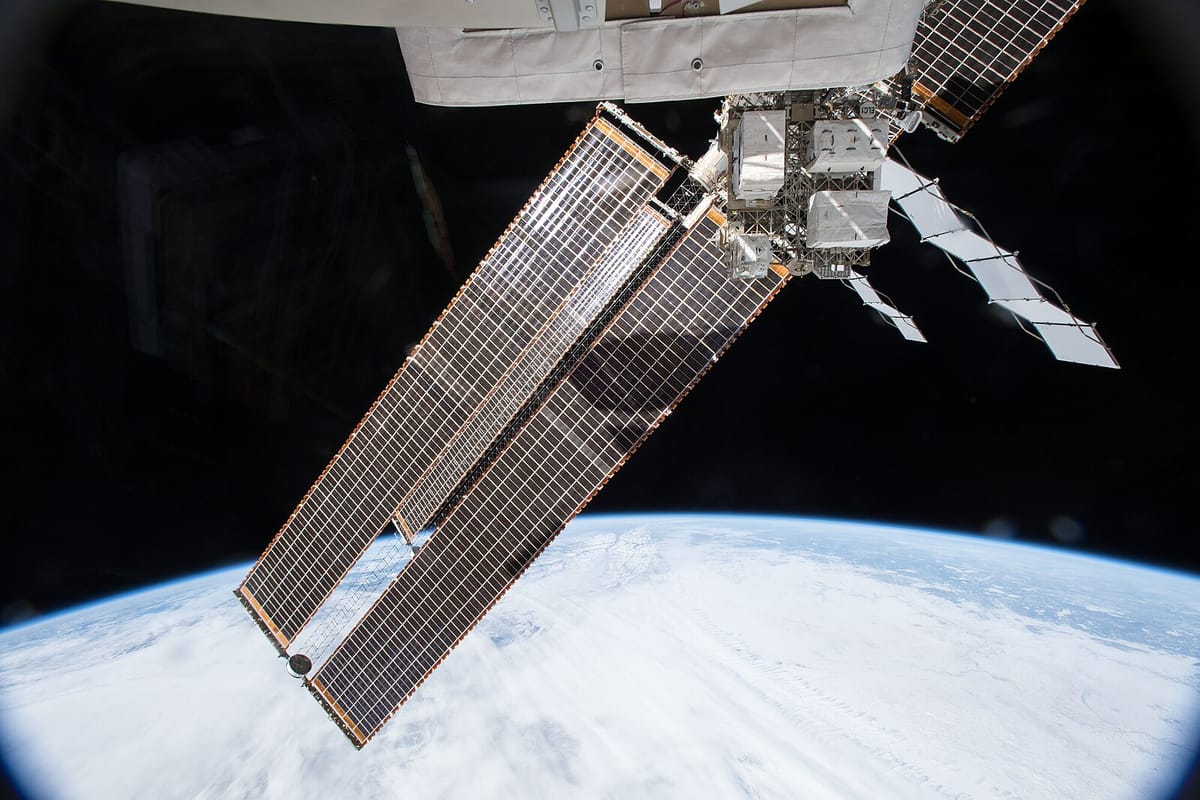Why Jeff Bezos Is Probably Wrong Predicting AI Data Centers In Space
Jeff Bezos said gigawatt AI data centers will orbit Earth in 10 to 20 years. Thermodynamics makes this idea unfeasible. Without convection, waste heat must radiate through panels spanning millions of square metres. Add latency, radiation risks and costs.

Jeff Bezos predicted at Italian Tech Week in Turin on October 3 that gigawatt-scale data centers will be deployed in space within the next two decades, citing continuously available solar energy as the decisive edge. I'm extremely bullish on the space economy in general, but I couldn't help pumping the brakes on this particular vision.
At first glance, the concept is undeniably appealing. As NVIDIA’s CEO Jensen Huang emphasized in his GTC 2025 keynote, AI is becoming a power‑limited industry, and constraints on terrestrial infrastructure are real. Solar in orbit has clear advantages: above the atmosphere you get roughly the full solar constant (~1,361 W/m²) versus ~1,000 W/m² at sea level under ideal conditions, plus no clouds or night, delivering ~30–40% more irradiance and a far better duty cycle. Launch costs have fallen from around $10,000 per kilogram to under $2,000 with SpaceX’s Falcon Heavy, and projected sub-$100 costs with Starship make the economics look increasingly viable.
Companies are already moving internet infrastructure skyward. SpaceX’s Starlink serves millions of users globally, proving the operational viability of large LEO constellations. And AST SpaceMobile has unfolded the largest commercial communications array ever in low Earth orbit—BlueWalker‑3’s 693‑square‑foot phased array—demonstrating we can build sizable orbital hardware. With falling launch costs, maturing satellite technology, and surging demand for compute, the narrative is compelling for investors seeking the next frontier of computing literally above the clouds.
But here’s where physics becomes the party crasher: cooling. High‑performance computing turns nearly all consumed electric power into heat. On Earth, we rely on conduction into liquid coolants and convection to air (plus heat rejection through cooling towers or dry coolers). In space, you can still conduct heat within the spacecraft to a radiator, but in the vacuum of space there’s no ambient gas or fluid to convect into; the only way to dump heat to the environment is radiation. The Stefan‑Boltzmann law is unforgiving at the temperatures electronics like: at radiator temperatures around 300–350 K (≈ 27–77 °C), even a near‑ideal surface only emits a few hundred to ~800 W per square meter. Real space radiators at ~300 K typically reject ~100–350 W/m² once you include emissivity, view factors, and operational constraints. That implies on the order of 1–3 m² of radiator area per kilowatt, or 1–3 million m² for a gigawatt data center. With realistic assumptions, my calculations for a one gigawatt data center yield a necessary surface area of at least 2.2 million m², which means the radiator must measure 1.1 million m² (since it radiates from both sides). This translates to a square with edges exceeding one kilometer. I doubt this would be economically feasible, not to forget the shadow it would cast on Earth.
The International Space Station, often cited to show complex computing works in orbit, actually illustrates the constraint. The ISS averages ~75–90 kW of electrical power (peaking higher in sunlight), and it carries extensive radiator wings and an active thermal control system just to stay in balance. Its onboard computing is modest by data‑center standards, yet the thermal hardware is substantial and must constantly optimize pointing to deep space to radiate heat. Scaling that to thousands of AI accelerators is a heat-rejection problem that today's technologies cannot easily overcome.
The radiation environment poses additional complications. Cosmic rays threaten data integrity and generate additional heat through particle interactions with electronics. Error-correction systems, redundancy, and radiation hardening all add computational overhead and energy consumption, further exacerbating the thermal challenge. Modern GPUs and AI accelerators, optimized for maximum performance per watt on Earth, would require substantial redesigns to operate reliably in space while managing these constraints.
Maintenance is another issue. Swapping a failed pump or board in a terrestrial data center takes hours. In orbit, a failed radiator panel or loop could idle racks until a servicing mission intervenes. Robotic servicing is advancing (e.g., Northrop Grumman’s MEV life‑extension missions in GEO), but ambitious NASA efforts like OSAM‑1 were canceled—underscoring how hard it is to make on‑orbit servicing routine and economical at scale.
Even the latency “advantage” deserves nuance. LEO links add on the order of tens of milliseconds round‑trip, which is great for consumer internet but glacial for tightly coupled AI training that relies on microsecond‑class fabrics (NVLink/NVSwitch domains, InfiniBand). Big distributed training jobs synchronize frequently; adding 20–50 ms to collective operations is a non‑starter for many workloads meant for in‑rack or in‑row interconnects.
The economics, too, require a reality adjustment. Launch prices have dropped dramatically, but they’re still far above pouring concrete and laying fiber. Add the mass and complexity of multi‑square‑kilometer radiators, redundancy, radiation hardening, and insurance for billion‑dollar assets in debris‑rich orbits and the business case thins out fast.
None of this dismisses space‑based computing entirely. Specialized edge cases make sense: on‑orbit preprocessing of Earth‑observation data before downlink, or small compute nodes integrated into comms satellites where the data already is. But the vision of gigawatt-scale orbital data centers powering Earth's AI revolution ignores fundamental physical constraints.
The space economy will boom nonetheless. Launch providers (SpaceX, Rocket Lab), direct‑to‑device players (AST SpaceMobile), and Earth‑observation companies will thrive by delivering indispensable services. Investors should absolutely watch those platforms. But when it comes to replacing terrestrial data centers with orbital ones, the laws of thermodynamics argue for keeping our servers—and expectations—grounded.
A more pragmatic near‑term path: subsea and offshore hybrids. Underwater or floating near‑shore data centers paired with offshore renewables (floating solar, wind) and seawater‑linked liquid cooling can deliver large thermal headroom without radiators the size of cities. Microsoft’s Project Natick found underwater modules had markedly lower failure rates than comparable land‑based gear, and multiple pilots are now exploring offshore floating data‑center platforms. An potentially interesting play on subsea infrastructure could be the Canadian company Kraken Robotics (OTC Markets: KRKNF).
Follow me on X for frequent updates (@chaotropy).
This is the author’s opinion only, not financial advice, and is intended for entertainment purposes only. The author holds long positions in Rocket Lab Corp. (NASDAQ: RKLB), Kraken Robotics Inc. (OTC Markets: KRKNF), Northrop Grumman Corp. (NASDAQ: NOC) and Amazon.com, Inc. (NASDAQ: AMZN). The author does not hold positions in any of the other companies mentioned. The author receives no compensation for writing this article and has no business relationship with any of the companies mentioned.




